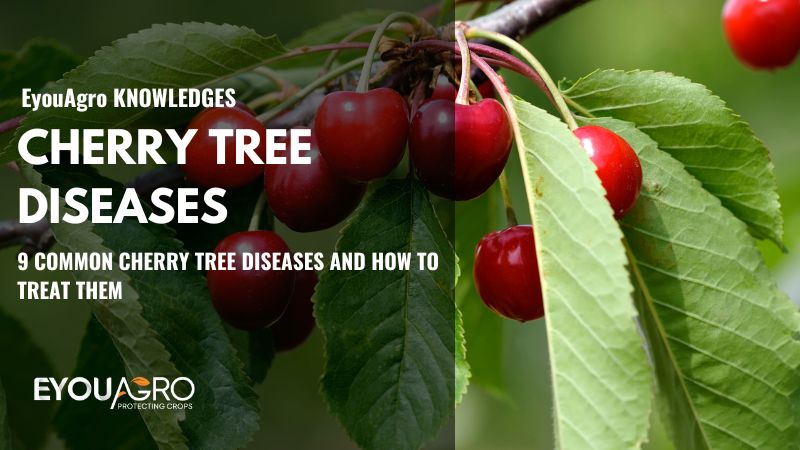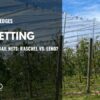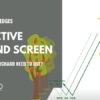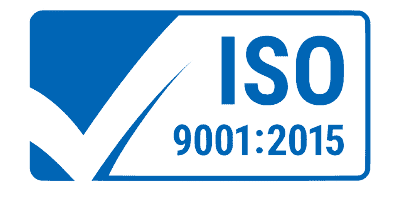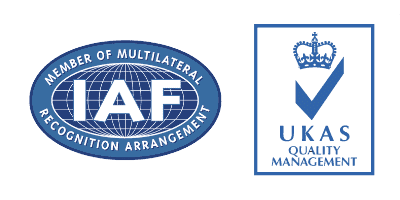A cherry tree is known for its sweet and nutritious fruits. The nutritional part of it is that it contains vitamins, fiber, potassium, and minerals. During springtime, they blossom, spreading out their beauty with their light pink flowers.
However, despite their sweet fruit and peach, cherry trees are like any other plant; they also get attacked by diseases.
since this article is about cherry trees,
let’s get to know some of the common cherry tree diseases and how to treat them.
What are the Cherry Tree Diseases?
After putting all your effort into getting a huge harvest, it can be so discouraging to lose your fruit. It is always good to prevent and treat your tree as soon as you identify some signs before it gets damaged by disease. Some of the signs include:
- Discolored leaves
- Sudden death plant
- dieback
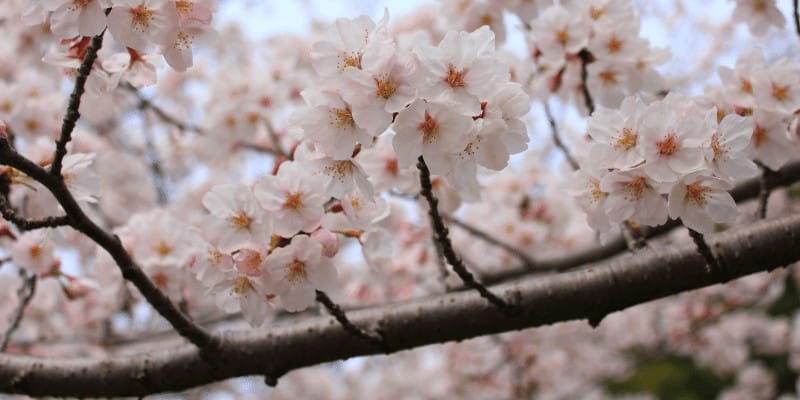
Here are the seven common cherry tree diseases and how to treat them.
1. Powdery Mildew
This disease is common to trees bearing fruits. Its infection is so nasty that it can quickly spread all over the entire garden, making it difficult to get rid of.
You can identify a tree with this kind of disease since it has a particular powder-like mold on its leaf and fruits.
Cause
The leading cause of this disease is flooding, overwatering, high moisture levels, but you can prevent it by not irrigating regularly, especially during the rainy season.
Treatment
Avoid over-watering the tree in its early stages when its fruits are still young. According to research done by students at Washington University, you can slow down the irrigation rate to once after every 14 days since it will prevent the spreading of the disease.
Pruning the leaves that are already infected and covering your cherries during winter will also prevent the spread of the disease.
2. Cytospora Canker
It is a fungal rot that damages the tree’s bark that eventually makes the branches flaccid. It is the worst disease that will destroy both sweet and sour cherries.

Cause
This disease is caused mainly by high temperatures, ice damages, and other climatic factors. Healthy barks cannot be affected; it only affects unhealthy damaged bark, so it is always advisable to take care of the tree and make sure your dinghy is not wounded.
Treatment
Not yet confirmed chemical treatment for this disease. To handle the infection, the Davey Research center recommends maintaining the health and wellbeing of prone trees.
Trim your highly infected cherry tree primarily when you identify canker signs
3. Necrotic Ringspot
Sweet and sour cherry trees are affected by necrotic ringspot. The common side effects include flaking leaves. The exact number of affected leaves will differ from tree to tree. The yellowish leaves may turn brown and die, and leaf symptoms may not appear season after season.
Never misinterpret the disappearance of symptoms for a full recovery. A black stain may run below the branches with symptomatic leaves.
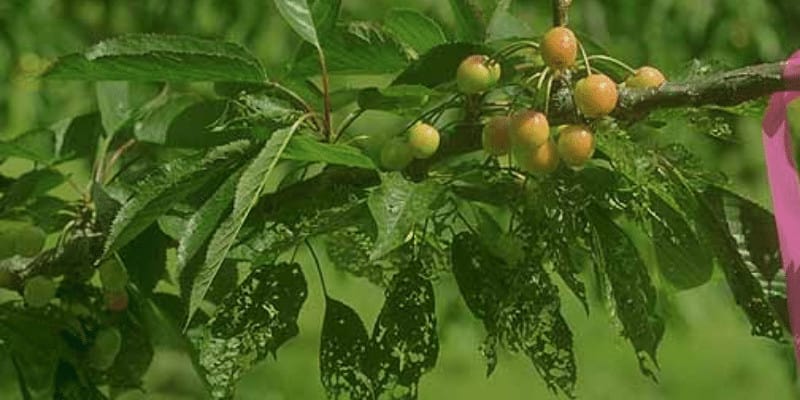
Cause
The leading cause of this disease is a soil fungus called Ophiosphaerella Korra.
Treatment
The best way to save your garden is to eliminate the infected trees and prevent the infection from spreading.
4. Cherry Leaf Spot
Cherry leaf spot is indeed a fatal infection that damages cherries. The disease can be extreme in one region and utterly absent in another. At first, the leaf spot appears purple, but eventually, it turns brown. the parts with spots may fall off, leaving the entire leaf with some small holes.
Occasionally, infected leaves will turn yellowish before falling. Cherry leaves that have this disease may drop prematurely.
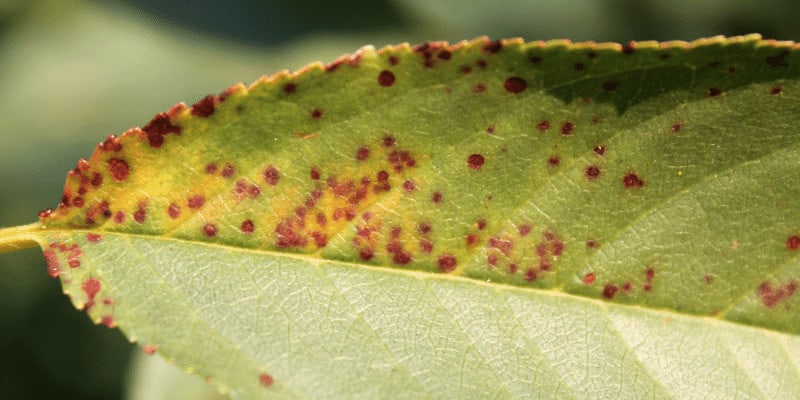
Treatment
To stop the fungus from spreading, collect and eliminate any falling cherry leaves from the orchard. Removing leaves from cherry trees in the backyard is an excellent technique, but it is limited to large orchards.
Whenever you plant your cherry tree, make sure it gets plenty of sunlight and airflow. Also, pruning the infected tree will help. Fungicide is the most effective method of controlling the infection in large orchards.
5. Black Knot
A black knot is a fungus that affects both fruiting and ornamental cherry trees. It is easily recognizable once formed by its rugged, irregular, dark galls that enwrap branches.
The best way to control that fungus is to detect the infection early on before the sickness has a chance to take hold. Pests and diseases enter the tree through the galls.
A black knot is often a slow-growing fungus that takes a season to appear and produce spores.

Treatment
Trim any knots you come across. It’s preferable to do this in the cold season when spore development is low. To guarantee that all of the disease and its spore are eradicated, cut down some inches past the galls. Larger twigs with knots must be cut down completely.
Where permitted, burning of sick stems and branches should be used to dispose of them. More minor trimmings are thrown away in garbage bags.
6. Crown Gall
This is a disease caused by Agrobacterium tumefaciens. It can be found on various woody shrubs and herbaceous plants like cherry trees and other plants worldwide.
Plants with multiple galls might be weaker, stunted, and fruitless due to their inability to transfer water from the soil up the trunk.
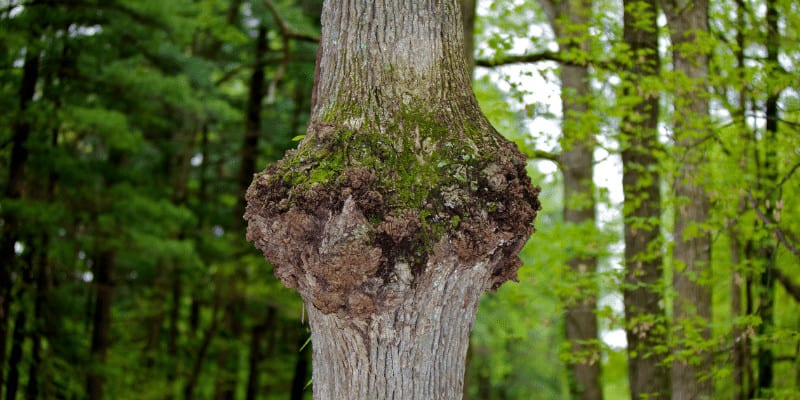
Treatment
- When feasible, choose crop varieties and buy plants from a reliable grower.
- When purchasing the plants, avoid the swollen ones
- Always use tree wrap to prevent whacker weed.
- Persistent galls can often be trimmed with trimming scissors.
7. X- Disease
This disease is spread from one tree to another by pests, and it destroys fruits. It’s easy to spot since the fruit grows slowly, but it’s a severe illness that can kill the twigs. On the other side, it takes several years to have such an impact on the tree. You can control the pests by netting.
Treatment
Prune the infected branches, but if it’s too late, the only thing you can do is cut down the damaged tree to avoid contamination.
8.Brown Rot
The disease is caused by fungi and infects stems, flowers, and fruits. The fungus is very dangerous and can reach an epidemic level. You can detect the disease by the following signs:
- Flowers and twigs start to brown
- Fruits with brown sports at ripening stage
- Twigs dies
- Dropping off of infected flowers
- Some cankers on twigs
Treatment
It is not easy to treat brown rot but you can control it:
- Sanitation – clear fallen fruits and debris around the tree.
- Pruning-when pruning remove all dead and diseased twigs
- Fungicides- apply fungicides when browning appears and when ripening.
9. Bacterial Canker
This disease is a killer for cherries and many other trees. The disease is caused by the bacterium Pseudomonas syringae. The diseases start by attacking the branches leading to wilt and death. It also infects leaves and leaves bigger holes in them.
Treatment
- Prune the affected parts.
- Proper nutrient and watering
- Plant your cherries in well-drained soil
- Select bacterium resistant cultivars
Conclusion
Cherry tree disease is a crucial concern, especially to cherry farmers. Call a tree care specialist if you see any alarming symptoms in your cherry tree. If you neglect your cherry tree illness, it could become lethal, infect nearby cherry trees, or ruin your produce.
EyouAgro provides the best netting products for your cherry trees. Our products are easily affordable, and they come along with after-sale service and warranty. We have different types of products as per your requirement. Our major goal is to make life easy for farmers and help them take good care of their cherries. Our services are the best, and you can’t afford to miss them.
Kindly contact us at info@eyouagro.com or visit https://eyouagro.com for more information.

